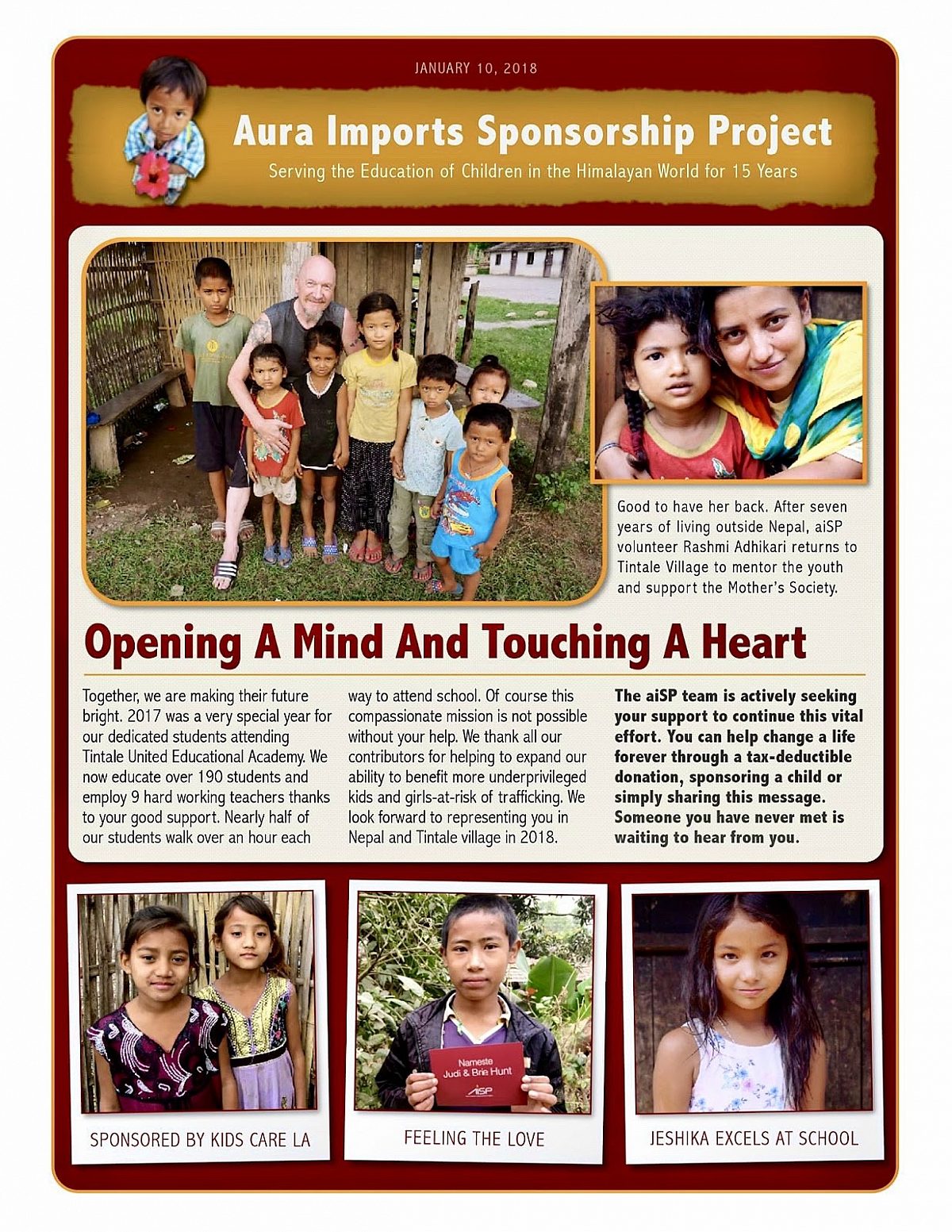
Former US president Jimmy Carter greets a Nepali boy in Kathmandu. The Carter Center monitored Nepal‘s November 2013 constituent assembly election, sending 66 observers from 31 countries to visit 336 polling centers in 31 districts. Credit: Deborah Hakes/The Carter Center
by William Aura
Throughout history, certain individuals emerge, not just as leaders, but as agents for profound change. President Jimmy Carter, renowned for his humanitarian work and commitment to peace, exemplified this transformative potential throughout his lifetime. His legacy continues to inspire hope and action, demonstrating how one person’s dedication can create significant ripples across the globe.
President Carter was not just a leader - he was a source of hope for many. What resonates deeply with me is his commitment to humanitarian work, particularly through Habitat for Humanity, where he personally rolled up his sleeves and helped build or renovate an impressive 4,390 homes for those in need. His actions turned ideals into reality.
While many are familiar with President Carter’s high-profile peace accords, including those between Israel and Egypt, his quieter yet deeply impactful role in facilitating negotiations in Nepal often remains in the shadows. This lesser-known chapter holds great significance for countless lives, including my own.

From 2002 to 2006, during the formative years of my nonprofit - the Aura Import Sponsorship Project - I traveled extensively throughout Nepal and India. It was my pleasure to represent individual sponsors in America who made the compassionate decision to support educational opportunities for disadvantaged youth. This period was filled with excitement and promise as we worked to empower students to pursue their education.
However, the backdrop of Nepal grappling with a brutal civil war, cast a shadow over our efforts. The violence between Maoist insurgents and the monarchy created an environment of extreme turmoil, and I was acutely aware of the risks involved. The U.S. State Department had explicitly warned me that if I ventured outside Kathmandu, there would be no protection.
During the same period of time, here comes President Jimmy Carter. His direct involvement reflected his belief in the power of conversation. Recognizing the urgent need for peace in Nepal, he collaborated with government officials and community leaders affected by the civil conflict. He listened closely to local leaders voicing their concerns about the violence. Instead of imposing his views, he encouraged open discussion, allowing community members to share their hopes and fears, which built trust.

Former US president Jimmy Carter and former First Lady Rosalynn Carter wear traditional Ghanaian attire, a gift from the chief of Tingoli village in northern Ghana. The Carters visited the village in partnership with Ghana’s ministry of health to help eradicate guinea worm disease and eliminate trachoma. Credit: The Carter Center.
His commitment to reconciliation brought about a critical accord that eventually helped to end the civil war and transform the political landscape of Nepal. Some would argue that the promise of that agreement has yet to be fully realized - however, there’s no doubt the negotiations sparked essential dialogue and opened a path to healing that reshaped the nation’s future.
Reflecting on the impact of this peace accord, I can see how profoundly it influenced my life and the lives of countless others. I first met young Shyam Basnet back in 2002 during my initial visit to Kathmandu at the magnificent Patan Durbar Square. As I admired the intricate architecture, a young boy approached me with a request - could he practice his English? That simple question led to an afternoon of exploration, with Shyam as my enthusiastic guide, sharing captivating stories of the area. Over the course of my yearly visits, we forged a genuine friendship. I felt compelled to support his education, as he shared his dream for a brighter future for himself and for the children in his village - who had no school.

Former US president Jimmy Carter cuts wood as he works on a home with his wife Rosalyn as they join volunteers from around the world to build 100 homes in earthquake affected Haiti. Credit: Ramon Espinosa / Associated Press
Despite his persistent invitations to visit his village home, I hesitated, fully aware of the dangers that lay beyond Kathmandu. Shyam recounted harrowing tales of the civil war affecting his region, which only deepened my understanding of his struggles. Though my heart longed to see his village, in regard to security, I would be entirely on my own. The risks weighed heavily on my mind.
However, with the peace accord initiated by Carter, the barriers that once held us back - were lifted. I accepted Shyam’s invitation to visit his village. We set out on an extraordinary journey marked by anticipation and excitement. It was a winding 14-hour drive through the Himalayan foothills, revealing breathtaking scenery at every turn. However, as we got closer to the Terai region where his village was located, the rough roads came to an end, and the real adventure began.
We had to navigate on foot a two-hour trek - laden with heavy gear and supplies, crossing rivers and walking over uneven terrain in the pitch black of night. At times, I found myself caught between excitement and disbelief, wondering how I had arrived at this remote corner of the world. It was a stark reminder of the challenges that came with reaching such a place - one that is now accessible via modern roads, but back then, it took a lot of effort to transport anything, especially a collection of school books.

First arrival in Tintale Village, Nepal 2007
Hiking further into the heart of the village, I was struck by a growing sense of purpose. The stability that had begun to take hold in the region, thanks to Jimmy Carter’s commitment to peace, made this journey possible, and I felt honored to be here.
What started as a simple visit quickly turned into a life-changing experience. Together with the villagers, we rolled up our sleeves and set to work establishing the first school in the region. It was an incredible effort that sparked hope for a brighter future - not just for me, but for countless children who had long been denied a proper education. The sheer joy and gratitude in the eyes of the children as they held their first books was something I will never forget. This was more than just a school - it was a source of hope and opportunity that would empower the community for years to come.
Our 2006 humble initiative with merely a dozen bright eyed students, has grown today into a thriving educational program that now serves hundreds of children. But the impact doesn’t end there. Inspired by the opportunities created, in 2009 we launched the first music program in Nepal through the Playing For Change Foundation.

First PFC recording session in Nepal 2006
Over the years, countless captivating videos from Playing For Change have featured artists from around the world, with a number spotlighting exceptional talent from Nepal. These videos, accessible on the Playing For Change website, beautifully embody our mission to create a connection through music.
Personally, I often reflect on the remarkable circumstances that led to this moment. It’s striking to consider how different things might have been. Witnessing this evolution feels like observing a pebble dropped into water - its ripples spreading far beyond the initial impact, touching lives in ways we may never fully understand.

Credit: The Carter Center
I often wonder if Jimmy Carter knew anything about Playing For Change. When we launched our first music program there, we had little understanding of our future impact. Yet, there was a deep synchronicity, almost a spiritual connection. It is a powerful reminder that every effort toward reconciliation and hope can yield incredible returns. It can shape a future in ways we might never foresee.
As we honor Jimmy Carter's influence, let’s celebrate the power of our shared journey - one that encompasses each and every individual who supports Playing For Change. Together, as a united team of passionate advocates, we are crafting a story of hope and harmony that extends far beyond our immediate efforts. Every performance, every lesson, and every act of kindness has the potential to inspire future generations. This is our moment to embrace connection and recognize the legacy we are building together.





